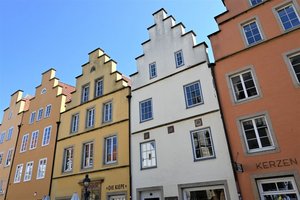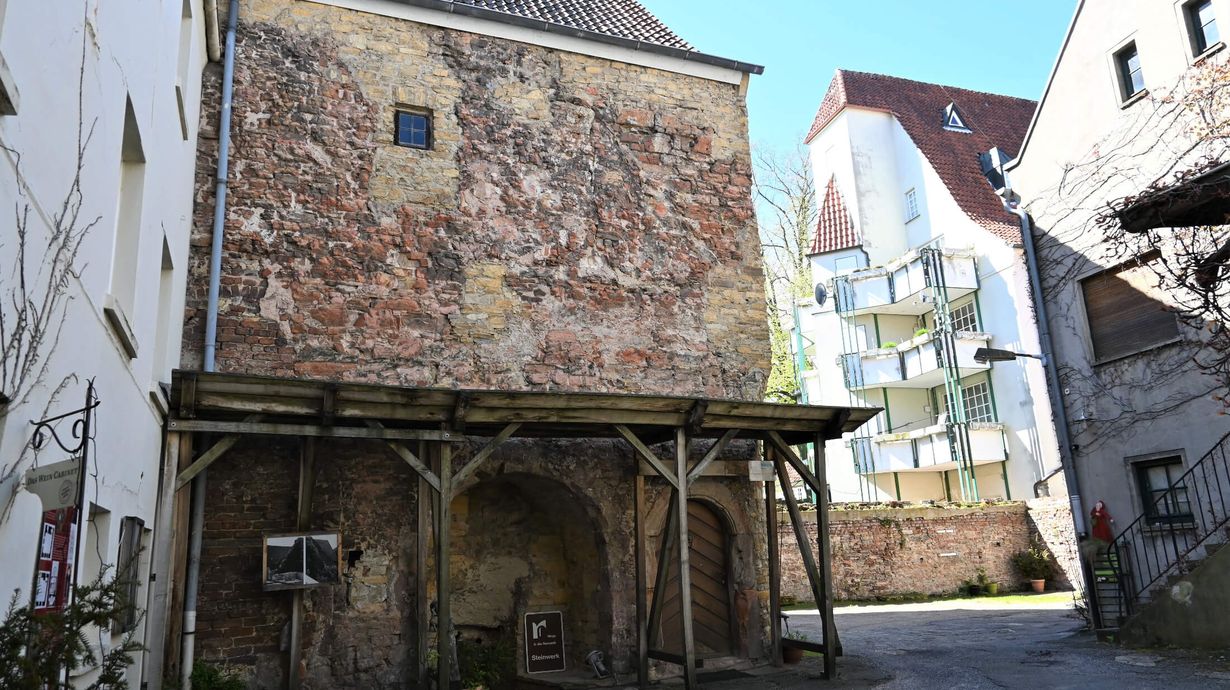The term Steinwerk can be traced back to the 9th century. It describes stonework buildings that can often be attributed to the Romanesque and Gothic architectural styles. These served as storage facilities for the possessions and goods of wealthy citizens and patricians. But they also provided a safe haven in dangerous situations, such as city fires. Until the age of the Renaissance in the 16th century, the Steinwerke buildings were built in their original solid design, after which the solid constructions were gradually reduced.
The Osnabrück Steinwerke
In Osnabrück, a distinct form of Steinwerk developed between the 12th and 14th centuries. This usually consisted of a combination of Steinwerk and a half-timbered front building, which were recognisable as separate structures. Relevant parts of the buildings were built with lacustrine limestone from the quarry of today's Botanical Garden in the Westerberg district. This could be easily quarried and used to build walls. For the majority of the building, sandstone from the Darum area was used, which was easier to work with and could even be polished. The exemplary structure of an Osnabrück Steinwerk is explained in the following more detailed description of the building in the Bierstraße Street.
Twenty-one examples of the domed roof typical of the early Steinwerke can still be found in the city. Today, a total of around thirty Steinwerke can still be found in the old town (Altstadt) mostly set back away from the street or in courtyards. The seven oldest still have a decisive influence on the cityscape of Osnabrück, the city of peace. Osnabrück is also known as the "capital of Steinwerke" because it has the largest number of preserved Steinwerke buildings in total.
During the Second World War, some of the Steinwerke buildings were used as bunkers, but most of them survived the Allied bombardment unscathed.
Oldest Steinwerk in Bierstrasse No. 7
The Steinwerk building on 7 Bierstrasse street, along with the building on 13 Dielingerstraße street, is around 1000 years old and is one of the oldest of the 300 Steinwerke that were originally in Osnabrück, dating back to around 1220. Other research also suggests the year 1180.
In contrast to its single-storey front house, which did not have a cellar, this Steinwerk had four storeys, each with a room and a cellar. The ground floor could also be used for living purposes. The wall between the front house and the stone building was 2.50 metres thick, while the remaining outer walls were 1.40 metres thick. The strict separation of cellar and upper floors by two doors on the ground floor also corresponded to the usual construction method. This building still shows quite well how Steinwerk buildings functioned as fire protection: traces of fire indicate that the front building burned down, but the stonework stopped the fire.
Use Today
Today, the Osnabrück Steinwerke fulfil many different functions. In the street Bierstraße, for example, many buildings hold a historical landmark protection status. Restaurants can be found in Steinwerke in the streets Turmstraße and Dielingerstraße as well as in the Romantik Hotel Walhalla, rustically embedded in Osnabrück's old town.






